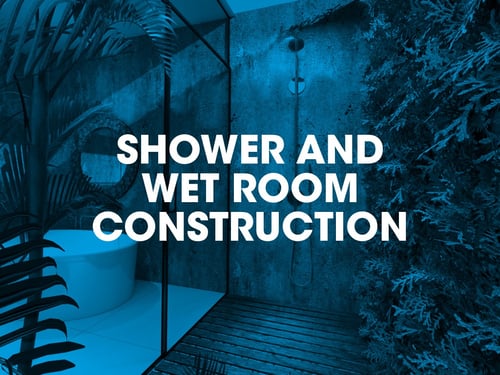What types of situation does this guidance relate to?
This guidance relates to shower constructions mainly fall into 2 types:
- A pre-formed shower tray and surround including those incorporated with a bath.
For the benefit of this guidance, we will refer to this types as ‘conventional’ shower and or bath areas’. With conventional shower and bath installations, an internal wall may form part of the enclosure but the pre-formed base or bath collects the water to the waste system, therefore the surrounding floor is not part of the installation.
- A walk in shower facility where the floor continues to be part of the shower area with or without a perimeter upstand.
For the benefit of this guidance, these are referred to as a ‘walk in shower and wet rooms’. With walk in shower facilities, the floor and surrounding wall constructions form part of the enclosure and must be carefully designed and constructed to avoid water escaping into the surrounding construction and the finishes below and adjacent to their location.
What are the Warranty providers concerns?
Shower constructions of both types, if poorly designed and constructed, could result in water reaching parts of the building fabric and creating potential for damage to occur e.g. water damage to ceilings below.
In conventional shower tray and bath situations, issues often present as:
- A lack of adequate sealing between the tray or bath and the enclosure surround, door or tiled wall allowing water to pass through and potentially cause damage to the surrounding construction.
- The shower tray or bath is not properly supported and flexes as soon as someone stands in the shower or bath resulting in the sealant joint tearing and breaking adhesion between the tiled surround and the preformed tray or bath.
In walk in shower and wet rooms situations, issues often present as:
- Floors that are not adequately constructed to be water tight.
- Suspended timber floor construction is not sufficiently rigid to prevent floor tiles cracking.
- Water resistant plasterboard or other suitable boarding is not used behind the tiling finishes.
- The water resistance of the junctions of the wall and floors is inadequate.
- Floor areas in the shower area not adequately designed to a fall.
- Showers traps/gullies are not accessible to enable maintenance.
- Showers traps/gullies being overwhelmed by the quantity of water from the shower unit - notably large shower heads with large water flow rates which a standard floor trap/gully cannot cope with and flooding to other areas of the wet room floor can occur.
- Failure to follow the issued specification and using alternative materials which may not be suitable.
- A lack of co-ordination between the plumbing , tiling, underfloor heating (if provided) and waterproofing trades.
Warranty stance
Failure to provide appropriate detailing to safeguard against the escape of water is considered to compromise the ability of the floors, the adjoining construction provided by the enclosing walls and associated materials in meeting with the Functional Requirements and Performance Standards stipulated by the Technical Manual, notably those relating to moisture resistance and durability.
What Developers should action after reading this document?
Where Developers propose the use conventional shower installations, baths and/or ‘walk in’ or ‘wet room’ installations that form part of the wall and floor constructions of the Home, the following guidance should be applied to design, specification and construction methodology in order to meet with the requirements of Warranty:
Walls associated with conventional shower and bath pre-formed installations:
- Moisture resisting plasterboard or a third party approved water-resistant cement backer board is to be used for the area of internal partition walling forming part of the enclosure that is to be tiled. The board should extend vertically to a height of 1800mm above the floor level and extend 40mm beyond any shower screen junctions. In the case of a shower fitted above a bath installation, the moisture resisting board should extend horizontally for the full length and width of the bath and 40mm horizontally beyond any shower screen junction.
- Tiles must be solidly adhered on an approved adhesive and similarly sealed with a flexible waterproof
- Pre-formed baths and shower trays must be supported to avoid flexing when normally loaded.
- Mould resistant sealant must be applied between the shower tray and bath fitting and the tiling. A continuous sealant bed should be applied between the surfaces of any fixed shower screen to the tiling, shower tray or bath in line with the manufacturers instructions – care should be taken to ensure any drainage holes or slots located in the screen/shower door frames are not blocked by applied sealants.
- Opening shower doors must ensure that a proper seal is made between the frame and shower tray or bath junctions to prevent water escaping.
Walls associated with walk in showers and wet rooms:
All points above, plus:
- The surrounding tiled walls to the enclosure or accommodation are required to be waterproofed for a height of 150mm above the floor junction and then ‘water resistant’ to a height of at least 1800mm and a horizontal zone of 1800mm in either direction from the shower head and trap/gulley locations.
- The junction of the walls and floors are required to be waterproofed.
Floors associated with conventional shower and bath pre-formed installations:
- Moisture resistant floor boarding should be used in accordance with the manufacturer’s recommendations to the whole bathroom area.
Floors associated with walk in showers and wet rooms:
- The floor surfaces are required to be waterproofed and adequately drained. Waterproofing products must have a 3rd Party product approval for the use intended (e.g. suitable if an underfloor heating installation is also proposed)
- Floor waterproofing must extend for a height of 150mm above the floor junction.
- A timber floor deck substrate is not suitable. The floor deck should be a water stable component with a 3rd Party product approval confirming its use for this situation.
- The structural floor below the deck must be suitably rigid and deflection minimised to avoid cracking of floor tiles and movement at the water proofing junctions with the walls.
- All penetrations in the floor construction are to be waterproofed and sealed.
- Floor finishes shall allow all surface water to drain without ponding and shall prevent water from discharging outside of the designed shower area.
- The floor finishes shall be suitably slip resistant.
- Wall and floor tiles in wet areas that are subject to standing water must be to product group as classified in Table 1 to BS EN 14411 ‘Ceramic tiles. Definition, classification, characteristics, assessment and verification of constancy of performance and marking’.
- Tiles must be solidly bedded on an approved flexible adhesive and similarly sealed with a flexible waterproof
- Falls to the wet area must prevent ponding and should fall between 1:80 and 1:100 to the drainage point. Tiles may need to be diagonally cut in the area of the gulley to achieve the desired fall. There must not be any sharp edges or significant lipping in the floor tiling upper surface where falls are created.
- A suitable water stop may be required to a wet room door threshold (from the other parts of the dwelling) with the base sealed to the floor waterproofing. It should be noted that in order to achieve a fall for drainage purposes and not dropping the floor construction locally; the height of the finished floor coverings may be above the adjacent floor levels in hall / landing / bedroom areas. A suitable threshold will be necessary.
- Drainage gullies must be maintainable and appropriately sized to take the intended water flow from the shower head without flooding. If a concrete floor construction forms the substrate, this and the floor screeds used to form the falls must be allowed to properly dry out before the tiles are fixed. Minimum drying times in accordance with BS 5385 ‘Wall and floor tiling’ should be followed. If underfloor heating is proposed in a concrete screed forming part of a walk in shower (the floor not being a timber construction) – the guidance of BS EN 1264-4 ‘Water based surface embedded heating and cooling systems – Installation’ should be applied in full to all instances. Any required movement control joints which are to be incorporated into the construction as required by this guidance should be fully resolved and capable of achieving the levels of watertightness required by the installation.
- A movement joint may be necessary at the wall and floor junctions due to the differing constructions. Specialist advice will be necessary to ensure a waterproof construction is maintained.

